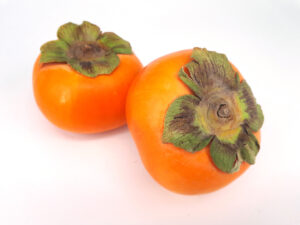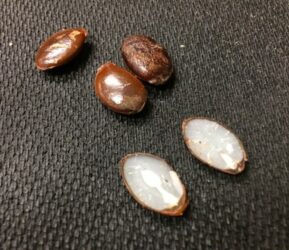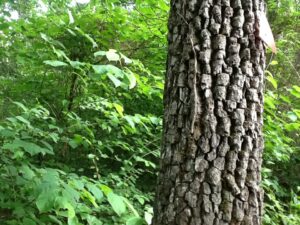By Bernheim
Persimmon (Diospyros virginiana)

Native persimmon trees are common at Bernheim both in more open areas and in the woods in places such as the Bent Twig Trail. Anyone who has eaten an unripe persimmon learns that they have great pucker power. The ripe permission however is a sweet and gooey treat for both humans and wildlife. Skunks, raccoons, opossums, and many other creatures need such calorie laden food to fatten up for winter.

Some folks like to predict the coming winter by slicing persimmon seeds to “folk cast” weather upcoming conditions. Although there are different versions of how this works, the one I recall goes something like this: “If the embryo inside seed is shaped like a knife, the winter will be cutting cold. If it’s shaped like a fork, the winter will have periods of cold and warm. But if the embryo is shaped like a spoon, you better grab your snow shovel!”

Additional Resources:
James Beard has my favorite Persimmon bread recipe. He uses pulp from Asian persimmons, but our native persimmon pulp works wonderfully.
Another delicious recipe using persimmon is this persimmon pudding recipe.

